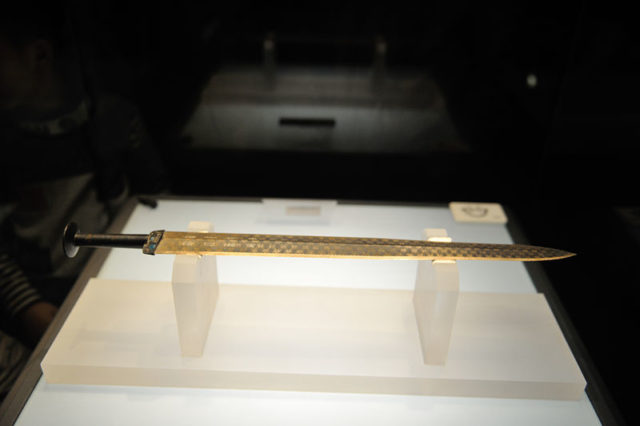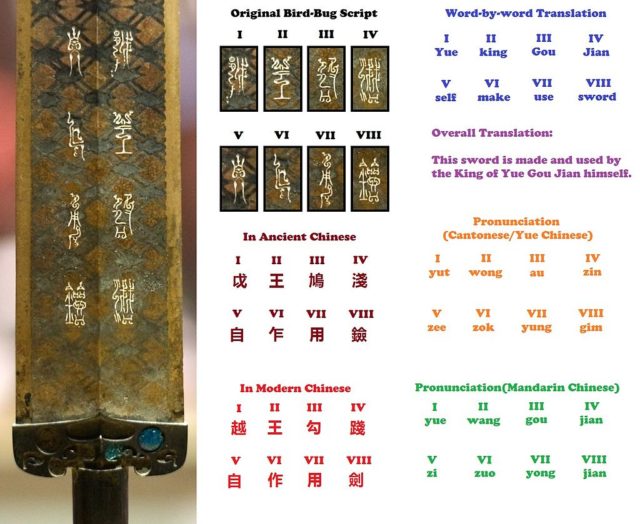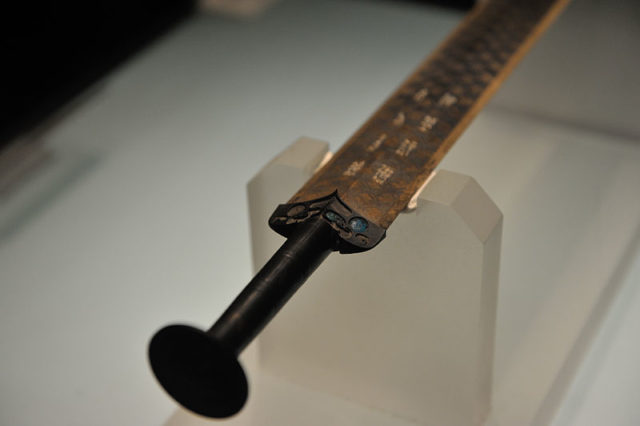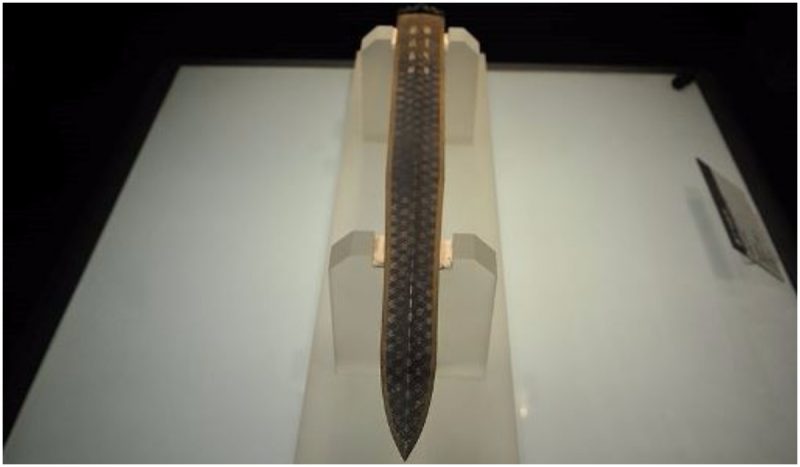Throughout history, there have been a fair number of distinctive swords. But one doesn’t stumble on a well-preserved example of one of these ancient blades every day. Examples of such discoveries include the Joyeuse, one of the most famed swords in possession of the Louvre, which is believed to have belonged to the “Father of Europe” Charlemagne, king of the Franks from 768 and the first Christian emperor of the Holy Roman Empire. Joyeuse was allegedly capable of changing its colors dozens time during the day; however, this sword has been adjusted and modified so many times over its lifetime that is hard to tell if it retains its original qualities.
Another is the ceremonial Seven-Branched Sword of Japan, discovered in the Japanese Isonkami shrine. Japanese scholars believe it was a gift from the king of Baekje in southwest Korea to a Japanese ruler during the reign of Empress Jingū. Its shape is noted as being a representation of the Korean-tree motif found on other royal artifacts. Nevertheless, when it was retrieved from the temple, it stood in a rather miserable condition. These are only two of many remarkable relics–weapons, almost sacred, that had had their glory in ancient times–but perhaps there is one sword which surpasses them all.

When the ancient Chinese Gouijan sword was discovered in a tomb in 1965, lurking side by side with a skeleton, it appeared to have somehow defied time, remaining without a speck of rust on its surface and the blade seemingly as sharp as the day it was forged. Archaeologists have estimated that its age is roughly 2,500 years. The ancient sword was found in 1965 during an archaeological survey in the Chinese province of Hubei in one of roughly 50 tombs that were unearthed.
It is a peculiar sword. Principally made of bronze, the metal also contains other elements that reinforce its structure and strength, such as copper, iron, lead, and sulfur, while the razor-sharp edges were made from tin. Untarnished despite spending over 2 millennia in a damp box, it is the higher concentration of sulfur and copper that have given the sword resilience against rusting, scientists have discovered.

It was one of the earliest discovered examples of a Jian sword. Typically double-edged straight weapons, these swords go a long way back in Chinese history and their importance in China resonates through the country’s mythology and folklore. The Sword of Goujian measures 22.9 inches in length and was cast for a king.
The handle is inlaid with turquoise and the grip bound with silk. Both sides of the blade bear black rhombic etchings as well as an inscription displaying eight characters in ancient Chinese. Hard to understand, it took experts some time to decode their meaning, which was eventually deciphered as saying that the sword was made for the personal use of the King of Yue.
Between 510 B.C. and 334 B.C., when the province of Yue existed, almost a dozen of kings held the throne. After further investigation, historians came to agree that the blade belonged to King Goujian, who reigned from 496 to 465 B.C., which is how the sword picked its name.

This king reigned during a turbulent era in ancient China, but it was also a period when perfecting weapons all across the country was on the rise, hence the deadly and unbreakable products such as his personal sword. The region suffered a number of attacks from neighboring kingdoms in the early years of King Goujian’s rule, but he cemented his victories and is recorded as being a notable and humble ruler.
His sword is today considered to be a national treasure in China; for the Chinese people, it is as legendary as the King Arthur’s Excalibur. It is displayed in the Hubei Provincial Museum along with other artifacts found at the site.
